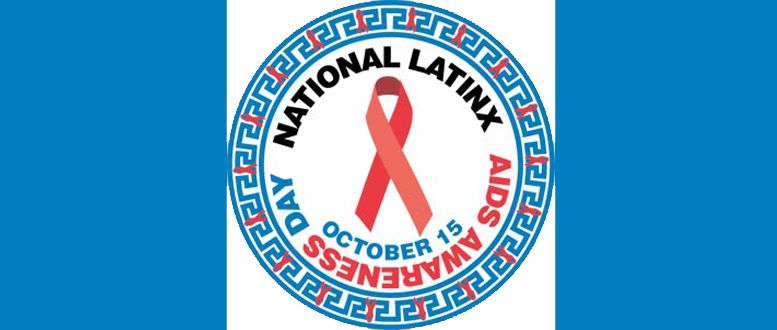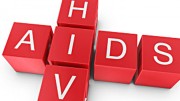The Anti-HIV App, MyPEEPS, will feature entertainment-like scenarios among other things
By: Eric Brus*—
NIH Awards $7.9 Million to Test Mobile HIV Prevention App for Young Gay and Bi Men
The National Institutes of Health (NIH) has awarded a $7.9 million grant to the Columbia University School of Nursing to test an HIV prevention mobile app specifically developed for high-risk young men. In the five-year project, Columbia researchers will adapt and test a new mobile version of MyPEEPS, an existing HIV education intervention that covers topics including correct condom use, dealing with stigma and shame, and communicating effectively about safer sex. MyPEEPS Mobile will be a web-based version of the intervention that will be accessible by mobile and desktop devices and that will feature games, videos, and interactive scenarios. The app will be evaluated in a randomized controlled trial involving 700 racially and ethnically diverse 13- to 18-year-old men with HIV-negative or unknown status at four geographically diverse sites: Birmingham, Alabama; Chicago, Illinois; New York, New York; and Seattle, Washington.
“Our aim is to provide this population with information to make better health decisions,” says Rebecca Schnall, a co-principal investigator for the project. “Young, diverse MSM are the most at-risk for HIV infection, and there is a dearth of evidence-based interventions targeting this community. There is much evidence that mobile tech is a great way to connect with this generation. By meeting them where they are, we are hopeful about the intervention’s potential to decrease infections.”
CDC Study Finds HIV+ MSM Have Significant Unmet Needs for Ancillary Services
More than half of the people currently living with HIV in the U.S. are gay, bisexual, and other men who have sex with men (MSM). There is an extensive body of research indicating that ancillary services such as case management, mental health and substance abuse treatment, transportation, and housing assistance can improve the health of persons living with HIV and help them achieve the goal of viral suppression. In a recent report in the Morbidity and Mortality Weekly Report, a research group from the Centers for Disease Control and Prevention (CDC) assessed the unmet needs for ancillary services among MSM receiving outpatient HIV medical care during 2013 and 2014. The researchers used data from the Medical Monitoring Project surveillance system to obtain nationally representative estimates of, and identify reasons for, unmet needs.
MSM who received outpatient HIV medical care during 2013 and 2014 reported having many needs for ancillary services, according to CDC. In particular:
- 23% reported unmet need for dental care;
- 19% reported unmet need for eye or vision care;
- 12% reported unmet need for food and nutrition services;
- 8% reported unmet need for HIV peer group support;
- 7% reported unmet need for transportation assistance;
- 7% reported unmet need for shelter or housing services; and
- 6% reported unmet need for mental health care.
“Findings from this analysis indicate some MSM were not accessing ancillary services because they did not know how to get services, were not eligible or were denied services, or had psychological barriers,” the researchers note. “Co-locating ancillary services with routine HIV medical care using a medical home model is a hallmark of the Ryan White HIV/AIDS Program. Expansion of the medical home model for HIV care by health departments, health care providers, and community-based organizations would likely increase access to needed ancillary services. When co-locating services is not feasible, proactive linkage via HIV case managers to existing program-funded services is another possible option for increasing access to services.”
San Francisco Reports Progress Toward Ending Its HIV Epidemic, But Challenges Remain
The number of new HIV cases in San Francisco continues to decline, and its HIV+ residents are getting linked to HIV care and achieving viral suppression more quickly, according to HIV Epidemiology: Annual Report 2016. The 108-page report from the San Francisco Department of Public Health (SFDPH) provides an overview of the HIV epidemic in San Francisco, including trends in HIV diagnoses, insurance status at time of diagnosis, engagement in prevention and care, and survival and deaths among persons living with HIV and AIDS. The report also provides breakdowns of HIV surveillance data and trends for the following groups: men who have sex with men; persons who inject drugs; heterosexuals; women; children, adolescents, and young adults; persons aged 50 and older; transgender persons; homeless persons; and persons coinfected with sexually transmitted infections.
In keeping with its Getting to Zero (GtZ) initiative, San Francisco hopes to be the first U.S. city to achieve the global GtZ goals of zero new HIV infections, zero HIV deaths, and zero HIV stigma. The 2016 report documents progress toward these goals, as well as persistent disparities in different demographic and risk groups. Overall, a total of 255 people in San Francisco were newly diagnosed with HIV during 2015 – a 52% decline from the 528 new HIV diagnoses reported in 2006. The 2015 figure for new diagnoses is the lowest number ever reported in the city since the epidemic began. However, there were substantial racial/ethnic disparities both in the diagnosis rates and the percentage change in diagnosis rates during the period from 2006 through 2015. In particular:
- among White men, the diagnosis rates declined nearly 66%―from 151 to 52 per 100,000;
- in contrast, among Black men, the diagnosis rates were substantially higher throughout the period and declined only 41%―from 238 to 140 per 100,000;
- among White women, the diagnosis rates were under 10 per 100,000 throughout the period;
- among Black women, diagnosis rates were substantially higher and fluctuated widely from year to year, starting at 47 per 100,000 in 2006 and ending at 31 per 100,000 in 2015.
SFDPH found significant disparities in access to HIV care and viral suppression among different demographic and risk groups in San Francisco. For example, a lower proportion of HIV+ males were retained in care 3 to 9 months after initial linkage to care (72%) than females (93%). Compared to other racial/ethnic groups, HIV+ African Americans had a lower proportion of linkage to care both 1 month and 3 months after diagnosis (67% and 81%, respectively), retention in care (64%), and viral suppression 12 months after diagnosis (53%). Interestingly, HIV+ homeless persons actually had higher rates of linkage to care within 3 months of diagnosis than people who were housed (94% versus 90%). However, the proportion of HIV+ homeless persons reaching viral suppression within 12 months after diagnosis was substantially lower (53%) than that of HIV+ persons who were housed (77%).
While San Francisco public health officials remain optimistic about the city’s progress toward ending its HIV epidemic, they noted that the persistence of disparities “serves as a reminder that more work needs to be done to address the social determinants of health that adversely impact health outcomes among persons living with HIV in San Francisco.”
NASTAD Recommends Steps to Ensure Equitable Access to Care for Transgender Persons
Many studies have shown that the prevalence of HIV infection is very high among transgender women, with an especially heavy impact on Black trans women of color. The National HIV/AIDS Strategy updated to 2020 (NHAS) outlines the importance of providing programs and services that address the needs of the transgender community in efforts to prevent new HIV cases in the U.S. “For transgender clients, insurance coverage represents an opportunity to access both HIV services and gender-affirming care and treatment,” according to Crossroads: ADAP Considerations for Transgender Health, an issue brief from the National Alliance of State and Territorial AIDS Directors (NASTAD).
“ADAPs and providers must directly engage transgender and gender nonconforming people in order to understand the systemic and day-to-day barriers many experience when attempting to engage in health care services,” the brief notes. “While cultural and gender-based training for staff can be a step in the right direction, intentional and direct input from transgender individuals is essential to create a support system that is safe and inclusive of all.” To meet the NHAS goals, NASTAD recommends that ADAPs and other providers take the following steps:
- incorporate transgender-specific considerations into insurance purchasing plan assessments, being mindful of plan policies and practices;
- include gender-affirming treatments on ADAP formularies;
- promote the collection of sexual orientation and gender identity data;
- include transgender-inclusive considerations on forms, communications, and publications;
- partner or contract with organizations that are run by transgender people, or are majority staffed by transgender people; and
- support syringe exchange services for clients who are injecting hormones or silicone, for feminization or masculinization, without medical supervision.
National Latino Aids Awareness Day (October 15)
This year, National Latino AIDS Awareness Day (NLAAD) will be held on Saturday, October 15. The theme for 2016 is “We’ll Defeat AIDS Con Ganas [with Gusto].” The Latino Commission on AIDS, the Hispanic Federation, and many other organizations share responsibility for organizing NLAAD. The main goals of this annual awareness day include building the capacity of non-profit organizations and health departments to reach Hispanic/Latino communities, promote HIV testing, and provide HIV prevention information and access to care. Below is an annotated list of online resources focusing on the impact of HIV/AIDS on Hispanic/Latino communities.
General Information
- National Latino AIDS Awareness Day. Web page for the day on the AIDS.gov website. Includes links to fact sheets in English and Spanish, HIV testing resources, and HIV programs focusing on Hispanic/Latino communities.
- HIV/AIDS and Hispanic Americans. Web page from the Office of Minority Health with detailed statistical information about HIV testing, HIV and AIDS cases, modes of HIV exposure, and death rates among Hispanic/Latino Americans.
- HIV Among Hispanics/Latinos. Fact sheet from the Centers for Disease Control and Prevention (CDC). Also available in Spanish.
- Recursos en Español. This page from the AIDS.gov website links to resources in Spanish from a variety of agencies.
- HIV in the United States: At a Glance. This fact sheet includes information about high HIV rates among Hispanics/Latinos. Also available in Spanish.
- Diagnoses of HIV Infection and AIDS in the United States and Dependent Areas. This CDC report includes information about HIV and AIDS cases among Hispanics/Latinos and five other racial/ethnic groups.
- Latinos and HIV/AIDS. Fact sheet from the Kaiser Family Foundation.
- HIV/AIDS in the U.S. Latino Community. Web page from thebody.com with links to articles and resources.
- The Body en Español. This link will take you to Spanish-language resources on thebody.com website. It includes many HIV materials in Spanish such as guides, articles, and fact sheets.
*Eric Brus is the Director of Health Information at AIDS Action Committee. This report is produced by the Health Library of the AIDS Action Committee in collaboration with the New England AIDS Education and Training Center Minority AIDS Initiative Project. The full version is available online.







